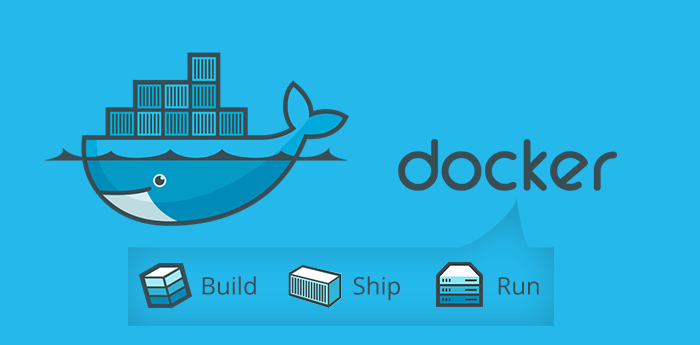Centos下Kafka的安装和使用
简介Kafka是由Apache软件基金会开发的一个开源流处理平台,由Scala和Java编写。Kafka是一种高吞吐量的分布式发布订阅消息系统,它可以处理消费者在网站中的所有动作流数据。本文主要记录如何在Centos下安装和使用kafka。
Kafka依赖于zookeeper,所以需要先搭建zookeeper集群。kafka内部自带了zookeeper,所以也可以独立使用。
1、下载kafka
你可以在kafka官网 http://kafka.apache.org/downloads下载到最新的kafka安装包,选择下载二进制版本的tgz文件,根据网络状态可能需要fq
2、解压kafka到指定的位置
tar -zxvf kafka_2.12-1.0.0.tgz -C /apps/
3、Kafka目录介绍
/bin 操作kafka的可执行脚本,还包含windows下脚本
/config 配置文件所在目录
/libs 依赖库目录
/logs 日志数据目录,目录kafka把server端日志分为5种类型,分为:server,request,state,log-cleaner,controller
4、配置信息
kafka配置文件下的文件:

a、【注意:如果没有使用独立搭建的zookeeper集群,就配置该配置】配置zookeeper
1)、编辑zookeeper.properties
# the directory where the snapshot is stored.
dataDir=/apps/kafka_data/zookeeper #目录必须存在,不存在就创建
dataLogDir=/apps/kafka_data/log/zookeeper #目录必须存在,不存在就创建
# the port at which the clients will connect
clientPort=2181
# disable the per-ip limit on the number of connections since this is a non-production config
maxClientCnxns=100
server.1=192.168.71.101:2888:3888
server.2=192.168.71.102:2888:3888
server.3=192.168.71.103:2888:3888
2)、创建myid文件,在dataDir目录下:/apps/kafka_data/zookeeper,根据配置文件server.1[2|3],来配置myid的内容
如:server.1下的myid里面的内容为1,依次类推
3)、启动kafka中的zookeeper,所有的服务器都需要启动
./bin/zookeeper-server-start.sh config/zookeeper.properties
b、kafka配置文件修改server.properties
# Licensed to the Apache Software Foundation (ASF) under one or more
# contributor license agreements. See the NOTICE file distributed with
# this work for additional information regarding copyright ownership.
# The ASF licenses this file to You under the Apache License, Version 2.0
# (the "License"); you may not use this file except in compliance with
# the License. You may obtain a copy of the License at
#
# http://www.apache.org/licenses/LICENSE-2.0
#
# Unless required by applicable law or agreed to in writing, software
# distributed under the License is distributed on an "AS IS" BASIS,
# WITHOUT WARRANTIES OR CONDITIONS OF ANY KIND, either express or implied.
# See the License for the specific language governing permissions and
# limitations under the License.
# see kafka.server.KafkaConfig for additional details and defaults
############################# Server Basics #############################
# The id of the broker. This must be set to a unique integer for each broker.
broker.id=1 #这里需要修改,每台服务器指定唯一的id号
############################# Socket Server Settings #############################
# The address the socket server listens on. It will get the value returned from
# java.net.InetAddress.getCanonicalHostName() if not configured.
# FORMAT:
# listeners = listener_name://host_name:port
# EXAMPLE:
# listeners = PLAINTEXT://your.host.name:9092
#listeners=PLAINTEXT://:9092
listeners=PLAINTEXT://192.168.71.101:9092 #这里配置本机IP和端口
# Hostname and port the broker will advertise to producers and consumers. If not set,
# it uses the value for "listeners" if configured. Otherwise, it will use the value
# returned from java.net.InetAddress.getCanonicalHostName().
#advertised.listeners=PLAINTEXT://your.host.name:9092
advertised.listeners=PLAINTEXT://192.168.71.101:9092 #这里也配置本机的IP和端口
# Maps listener names to security protocols, the default is for them to be the same. See the config documentation for more details
#listener.security.protocol.map=PLAINTEXT:PLAINTEXT,SSL:SSL,SASL_PLAINTEXT:SASL_PLAINTEXT,SASL_SSL:SASL_SSL
# The number of threads that the server uses for receiving requests from the network and sending responses to the network
num.network.threads=3
# The number of threads that the server uses for processing requests, which may include disk I/O
num.io.threads=8
# The send buffer (SO_SNDBUF) used by the socket server
socket.send.buffer.bytes=102400
# The receive buffer (SO_RCVBUF) used by the socket server
socket.receive.buffer.bytes=102400
# The maximum size of a request that the socket server will accept (protection against OOM)
socket.request.max.bytes=104857600
############################# Log Basics #############################
# A comma seperated list of directories under which to store log files
log.dirs=/apps/kafka_data/kafka-logs #配置大指定的目录
# The default number of log partitions per topic. More partitions allow greater
# parallelism for consumption, but this will also result in more files across
# the brokers.
num.partitions=1
# The number of threads per data directory to be used for log recovery at startup and flushing at shutdown.
# This value is recommended to be increased for installations with data dirs located in RAID array.
num.recovery.threads.per.data.dir=1
############################# Internal Topic Settings #############################
# The replication factor for the group metadata internal topics "__consumer_offsets" and "__transaction_state"
# For anything other than development testing, a value greater than 1 is recommended for to ensure availability such as 3.
offsets.topic.replication.factor=1
transaction.state.log.replication.factor=1
transaction.state.log.min.isr=1
############################# Log Flush Policy #############################
# Messages are immediately written to the filesystem but by default we only fsync() to sync
# the OS cache lazily. The following configurations control the flush of data to disk.
# There are a few important trade-offs here:
# 1. Durability: Unflushed data may be lost if you are not using replication.
# 2. Latency: Very large flush intervals may lead to latency spikes when the flush does occur as there will be a lot of data to flush.
# 3. Throughput: The flush is generally the most expensive operation, and a small flush interval may lead to exceessive seeks.
# The settings below allow one to configure the flush policy to flush data after a period of time or
# every N messages (or both). This can be done globally and overridden on a per-topic basis.
# The number of messages to accept before forcing a flush of data to disk
#log.flush.interval.messages=10000
# The maximum amount of time a message can sit in a log before we force a flush
#log.flush.interval.ms=1000
############################# Log Retention Policy #############################
# The following configurations control the disposal of log segments. The policy can
# be set to delete segments after a period of time, or after a given size has accumulated.
# A segment will be deleted whenever *either* of these criteria are met. Deletion always happens
# from the end of the log.
# The minimum age of a log file to be eligible for deletion due to age
log.retention.hours=168
# A size-based retention policy for logs. Segments are pruned from the log unless the remaining
# segments drop below log.retention.bytes. Functions independently of log.retention.hours.
#log.retention.bytes=1073741824
# The maximum size of a log segment file. When this size is reached a new log segment will be created.
log.segment.bytes=1073741824
# The interval at which log segments are checked to see if they can be deleted according
# to the retention policies
log.retention.check.interval.ms=300000
############################# Zookeeper #############################
# Zookeeper connection string (see zookeeper docs for details).
# This is a comma separated host:port pairs, each corresponding to a zk
# server. e.g. "127.0.0.1:3000,127.0.0.1:3001,127.0.0.1:3002".
# You can also append an optional chroot string to the urls to specify the
# root directory for all kafka znodes.
zookeeper.connect=192.168.71.101:2181,192.168.71.102:2181,192.168.71.103:2181 #这里配置zookeeper的ip和端口
# Timeout in ms for connecting to zookeeper
zookeeper.connection.timeout.ms=6000
############################# Group Coordinator Settings #############################
# The following configuration specifies the time, in milliseconds, that the GroupCoordinator will delay the initial consumer rebalance.
# The rebalance will be further delayed by the value of group.initial.rebalance.delay.ms as new members join the group, up to a maximum of max.poll.interval.ms.
# The default value for this is 3 seconds.
# We override this to 0 here as it makes for a better out-of-the-box experience for development and testing.
# However, in production environments the default value of 3 seconds is more suitable as this will help to avoid unnecessary, and potentially expensive, rebalances during application startup.
group.initial.rebalance.delay.ms=0
5、启动kafka,每个节点都需要启动
./bin/kafka-server-start.sh –daemon config/server.properties &
6、测试
a、创建一个topic
bin/kafka-topics.sh --create --zookeeper 192.168.71.101:2181 --replication-factor 1 --partitions 1 --topic test
topic的名字为test
b、查看topic列表
bin/kafka-topics.sh --list --zookeeper 192.168.71.101:2181
c、开启一个消费者
bin/kafka-console-consumer.sh --bootstrap-server 192.168.71.101:9092 --topic test --from-beginning
这里启动后没有任何消息,因为还没有生产者发送消息,所以这里不能进行消费
d、开启一个生产者
bin/kafka-console-producer.sh --broker-list 192.168.71.101:9092 --topic test
进入后,就直接输入消息数据,然后查看消费者终端,里面就有信息了
 快速生成表格
快速生成表格 前一篇博客中已经说过Golang对Gzip的处理,其实这是我的服务器端的处理,那么当我们服务器返回Gzip压缩的字符串后,客户端如何进行解压呢?本文主要记录下JavaScript对Gzip进行压缩和解压处理。
前一篇博客中已经说过Golang对Gzip的处理,其实这是我的服务器端的处理,那么当我们服务器返回Gzip压缩的字符串后,客户端如何进行解压呢?本文主要记录下JavaScript对Gzip进行压缩和解压处理。 有使用需要使用GD库,网上很多文章都是记录通过下载一堆文件编译安装,其实在PHP的源码包中,已经有gd的编译源码,只需要简单的执行几个命令就可以安装好gd扩展。
有使用需要使用GD库,网上很多文章都是记录通过下载一堆文件编译安装,其实在PHP的源码包中,已经有gd的编译源码,只需要简单的执行几个命令就可以安装好gd扩展。 MaterialApp是我们使用 Flutter开发中最常用的符合Material Design设计理念的入口Widget。你可以将它类比成为网页中的html标签,且它自带路由、主题色,title等功能。
MaterialApp是我们使用 Flutter开发中最常用的符合Material Design设计理念的入口Widget。你可以将它类比成为网页中的html标签,且它自带路由、主题色,title等功能。 在于前端攻城狮的兄弟们开发接口的时候,总会遇到一些奇怪的问题。比如IOS对某个字段要求要整数,如果PHP这边返回过去是字符串那么APP就会崩溃。虽然他们可以捕获异常,但是有些时候我们更想后端的攻城狮能否提供一种统一的数据类型,前端想怎么转换就是他们自己的事情,本文我们将给大家带来这方面的处理。
在于前端攻城狮的兄弟们开发接口的时候,总会遇到一些奇怪的问题。比如IOS对某个字段要求要整数,如果PHP这边返回过去是字符串那么APP就会崩溃。虽然他们可以捕获异常,但是有些时候我们更想后端的攻城狮能否提供一种统一的数据类型,前端想怎么转换就是他们自己的事情,本文我们将给大家带来这方面的处理。 Electron页面跳转、浏览器打开链接和打开新窗口
Electron页面跳转、浏览器打开链接和打开新窗口 在使用Git的过程中,不想每次都输入用户名和密码去拉取代码,所以就需要保存这些信息,那么既然有保存了,就必须有清除功能。
在使用Git的过程中,不想每次都输入用户名和密码去拉取代码,所以就需要保存这些信息,那么既然有保存了,就必须有清除功能。 Docker编译镜像出现:fetch http://dl-cdn.alpinelinux.org/alpine/v3.12/main/x86_64/APKINDEX.tar.gz
ERROR: http://dl-cdn.alpinelinux.org/alpine/v3.12/main: temporary error (try again later)
WARNING: Ignoring APKINDEX.2c4ac24e.tar.gz: No such file or directory问题
Docker编译镜像出现:fetch http://dl-cdn.alpinelinux.org/alpine/v3.12/main/x86_64/APKINDEX.tar.gz
ERROR: http://dl-cdn.alpinelinux.org/alpine/v3.12/main: temporary error (try again later)
WARNING: Ignoring APKINDEX.2c4ac24e.tar.gz: No such file or directory问题 在Mac电脑中,如何对Git的用户名和密码进行修改呢?起初不懂Mac,所以整了很久,本文将记录如何对这个进行操作,以便后期使用。
在Mac电脑中,如何对Git的用户名和密码进行修改呢?起初不懂Mac,所以整了很久,本文将记录如何对这个进行操作,以便后期使用。